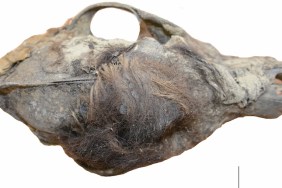Researchers from East Tennessee State University found evidence of a “bone-crushing” prehistoric dog at a the Gray Fossil Site, according to a press release from the college.
The discovery of this “bone-crushing” dog marks the first of its kind to be found in the Appalachian area.
“Bone-Crushing” Dogs
“Bone-crushing” dogs belong to the genus Borophagus, an extinct group of canids who once roamed North America. They got their name from their powerful jaws, strong enough to destroy bone.
Prior to the discovery of an upper arm bone at the Gray Fossil Site, scientists thought this creature existed only in open grasslands. Dense forrest fills the Appalachian region, a stark contrast from the ecosystem researchers previously found Borophagus fossils.
The Gray Fossil Site boasts around 200 species of animals and plants, most of which are not apex predators. In fact, this “bone-crushing” dog is one of two terrestrial apex predators found at the site. The other is a sabertooth cat.
“With two large predators on land and alligators in the water, herbivores at the site would have had to be on high alert,” said Emily Bōgner, one of the researchers.
From Apex Predator to Domestic Pet
How did this “bone-crushing” dog evolve into a beloved domestic pet?
Recently, scientists traced domestic dogs’ lineage to two populations of ancient grey wolves from Asia and Africa. Scientists hypothesize that these wolves descended from the Borophagus genus.
It’s pretty incredible that our goofy pups came from a line of vicious apex predators, especially dogs strong enough to crush bones.









